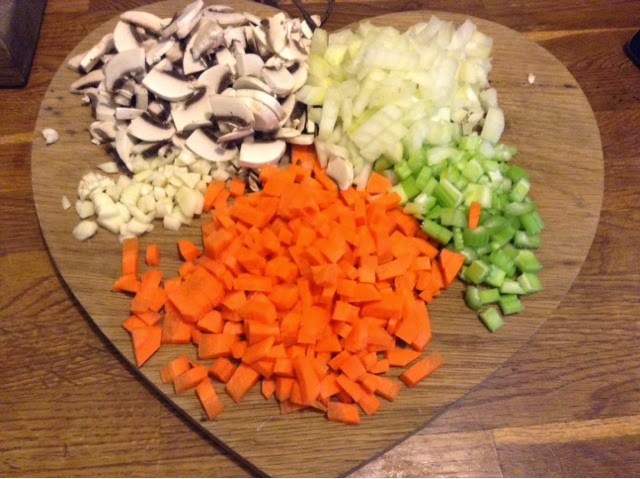Lasagne is the perfect comfort food. Ragu, pasta and a béchamel sauce all layered together to create something totally delicious. The secret ingredient in this dish is chicken liver. Even if you think you don't like offal, give them a go anyway. Chopped finely enough they melt into the ragu to produce an undetectable but delectable taste.
I use dried pasta sheets in this, which seems lazy, but having experimented with homemade fresh pasta I've found that it is too soft in the finished dish - using dried ensures that the layers stay intact once cooked. Be sure to use egg pasta sheets though as they have a richer flavour than their flour and water counterparts.
Ingredients
For the ragu
500g lean beef mice
100g chicken livers, finely chopped
2 carrots, chopped
1 onion, chopped
1 celery stick, finely chopped
100g mushrooms, quartered
400ml passata
100ml red wine
1 tbsp tomato purée
3 garlic cloves, chopped
2 tbsp oil, to cook
Salt and pepper, to taste
For the béchamel sauce
150g butter
150g flour
600ml whole milk ( you may not need it all)
80g Parmesan cheese, plus extra or top
9 dried lasagne sheets
Method
Make the ragu first, as this takes the longest to do. Heat the oil in a large casserole dish and add the onion, cooking gently until it is softened (around 10 minutes). Then, add the garlic and cook for a further 2 minutes.
Next, add the rest of vegetables (and a bit more oil, if needed) and cook for 5 minutes before adding the mince and chicken livers and frying until evenly browned.
Add the passata, red wine and tomato purée and mix everything together before bringing to the boil and then placing it on the lowest heat setting, leaving it to simmer for around 2 hours. Allow to cool before assembling your lasagne.
Melt the butter in a sauce pan and then whisk in the flour until there are no lumps. Leave this on the hob for a few minutes to cook the floury taste out of it. Then, whisk in the milk a little at a time until you have a thick, smooth sauce. Stir in the Parmesan cheese and leave to cool.
Pasta sheets
Bring a large pan of salted water to the boil and blanch the sheets in batches of three for around 30 seconds to slightly soften, before placing them on a clean tea towel or kitchen paper.
Assembling the lasagne
I actually broke my lasagne dish a while ago and haven't got round to replacing it, so just used a pie dish which is a couple of inches deep. The good thing is that it's made of glass, so the layers are visible from the outside.
Grease your dish and start your layers. I do ragu, béchamel and pasta three times before covering the last layer of pasta with the remaining white sauce and scattering over some Parmesan and a few grinds of black pepper. The construction of lasagne is a contentious issue, so build it however you like, but I really do think this way is the tastiest.
Cook at 200 degrees for 30-40 minutes until the lasagne is bubbling and the top is golden and crispy. Leave to stand for 10 minutes and serve with a green salad and some olives. Like most food, lasagne is even better the next day and freezes well before cooking.










No comments:
Post a Comment